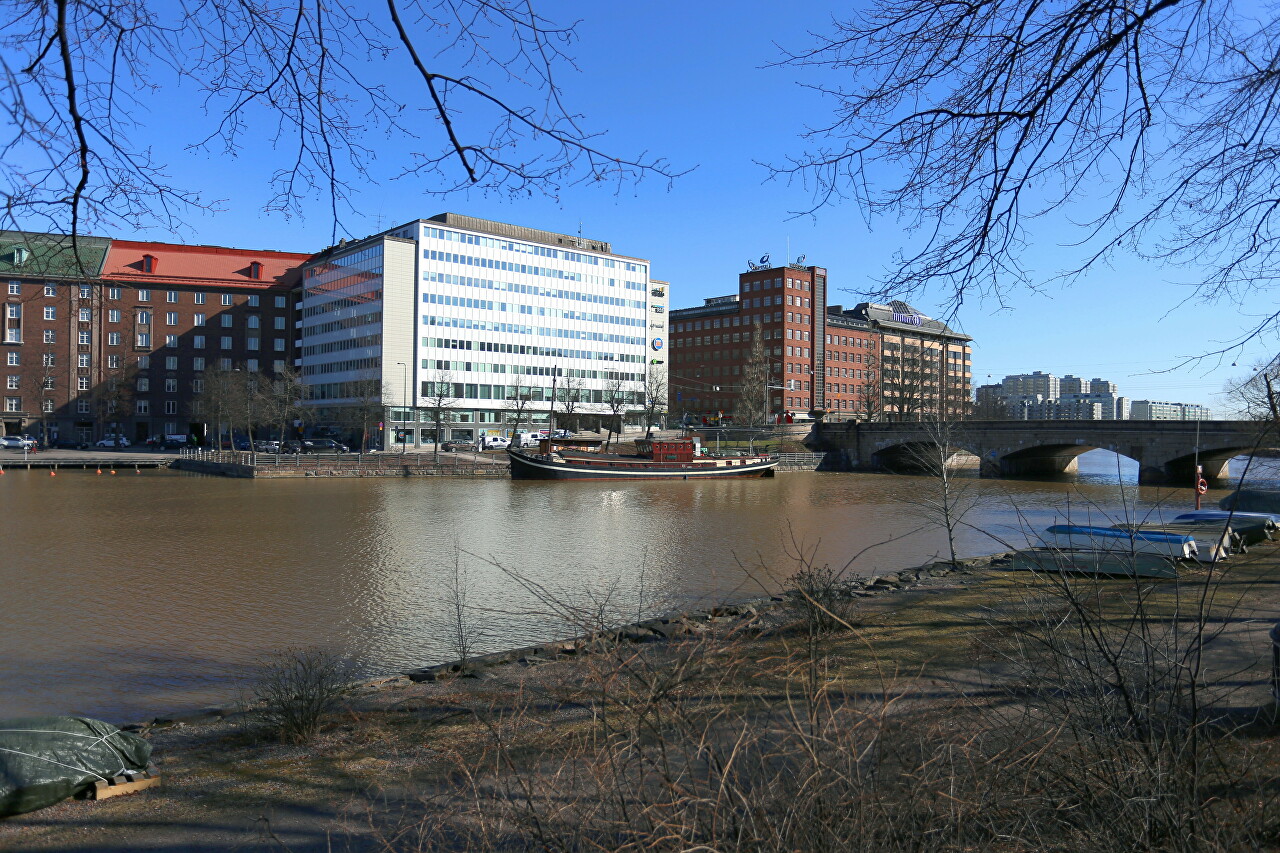Kaisaniemenlahti and Eläintarhanlahti, Helsinki
The northern end of Kaisaniemi Park faces the shore of a reservoir called Kaisaniemenlahti, which, as you might guess, was named from the same source as the park and literally means the Bay of Kaisaniemi.
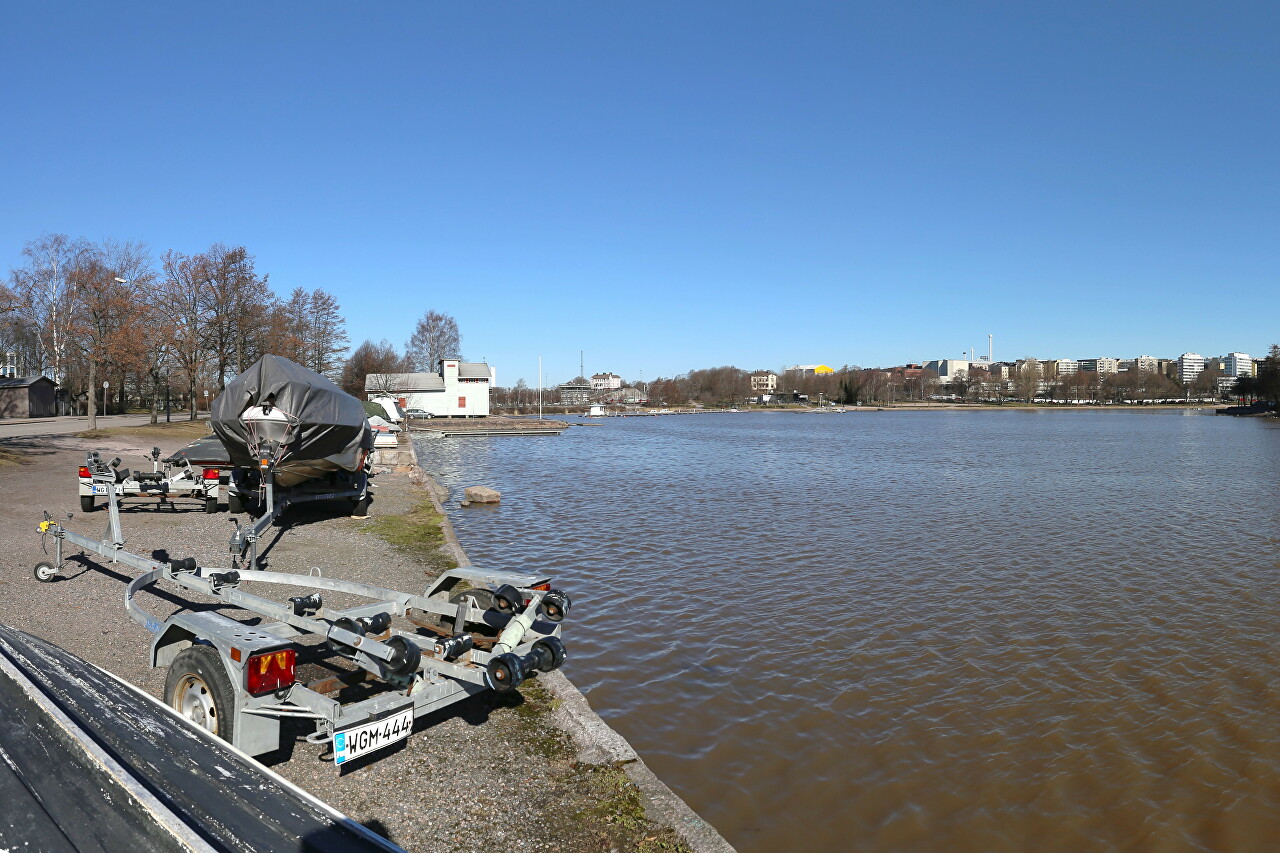
In fact, it is a strait between the Eläintarhanlahti Bay and the Long Bridge (Pitkasilta), which divide Helsinki into southern, coastal, northern, and continental parts.
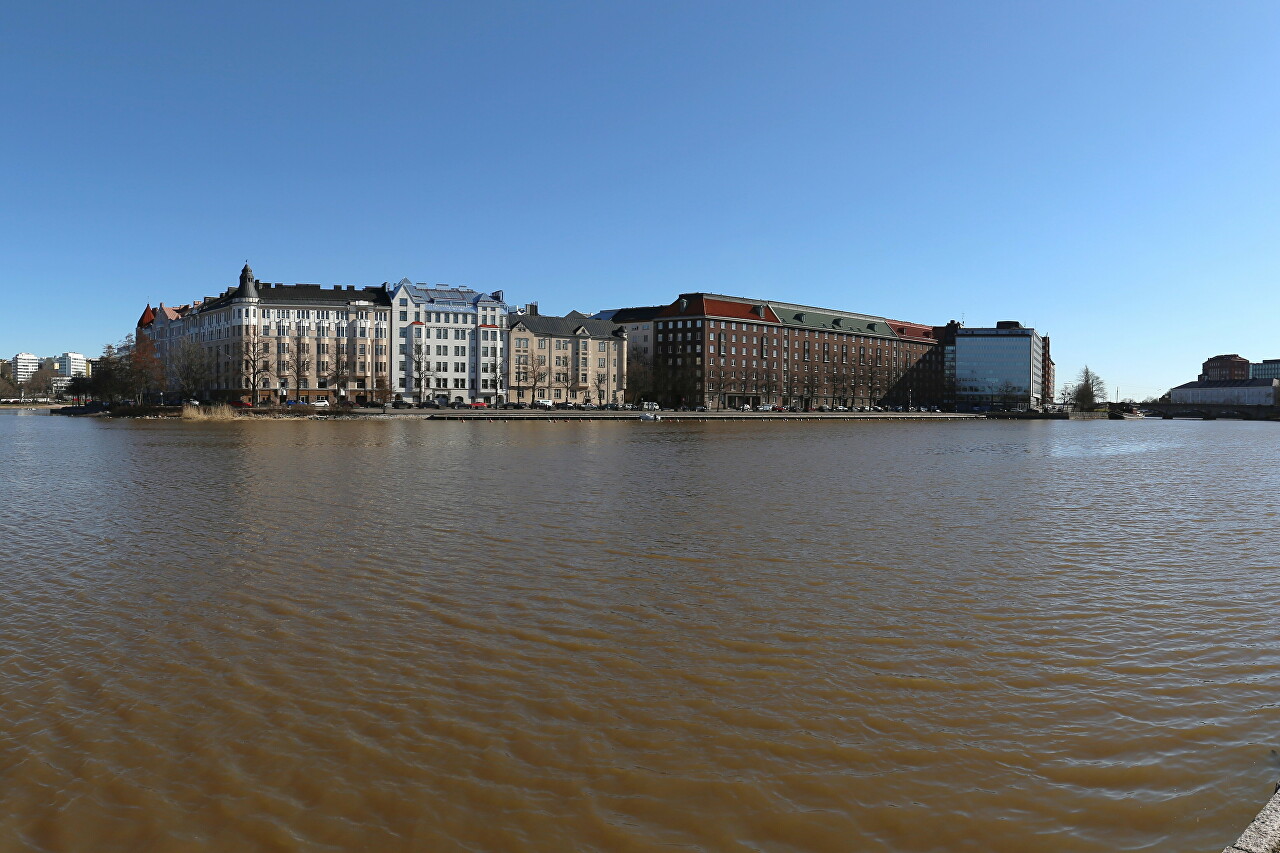
Initially, the central part of the city, the Kruununhaka area, was located on an island that separated this strait from the mainland. In 1640, the narrowest point (in the area of the Esplanade) was filled in and the strait became a deep bay, gradually swamping. In the 19th century, this place was filled with fetid slime, as all the city's sewage drained here.
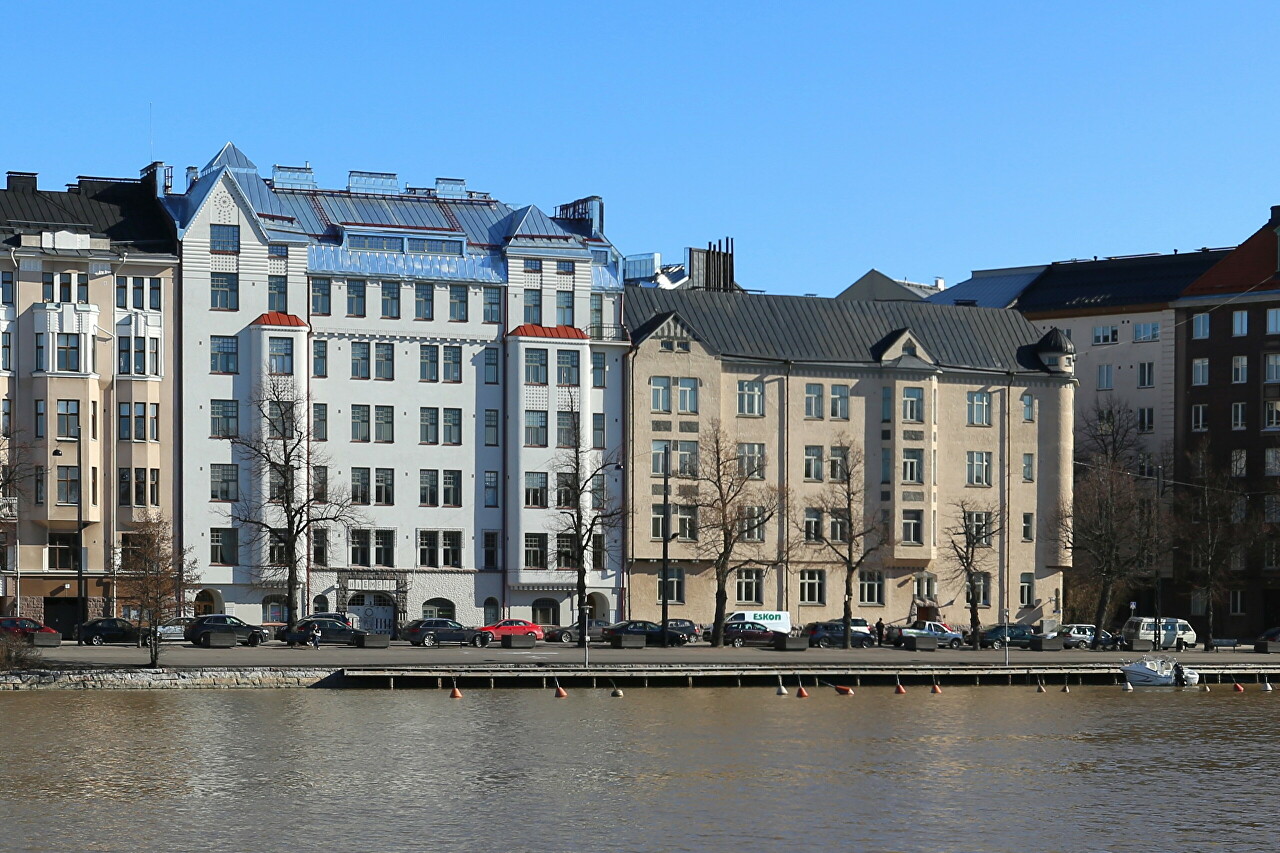
In the second half of the nineteenth century, during the construction of the railway that runs along the western bank of Elaitarkhanlahti , the reservoir was put in order and now it is one of the decorations of the Finnish capital.
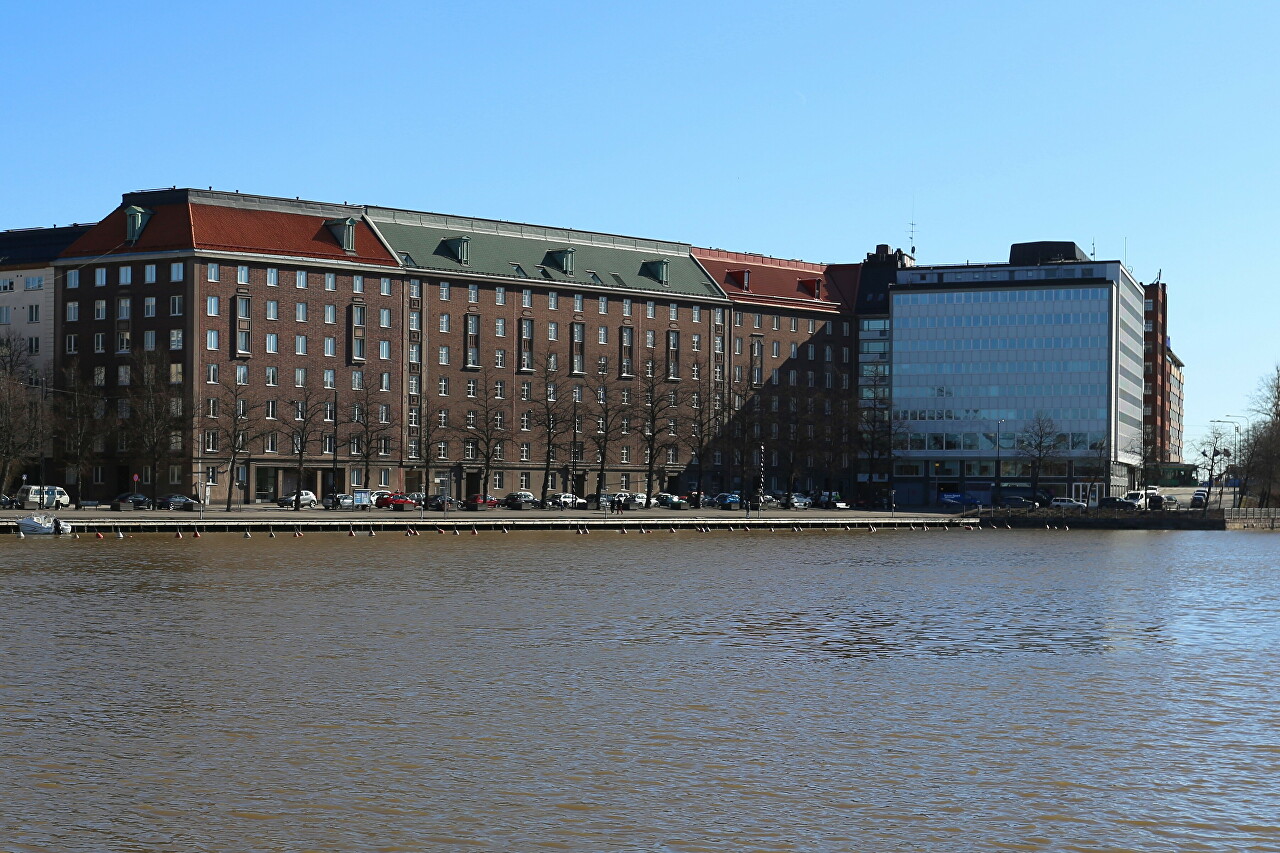
On the opposite bank is the Siltasaari quarter, built up with fashionable houses in the early 20th century.
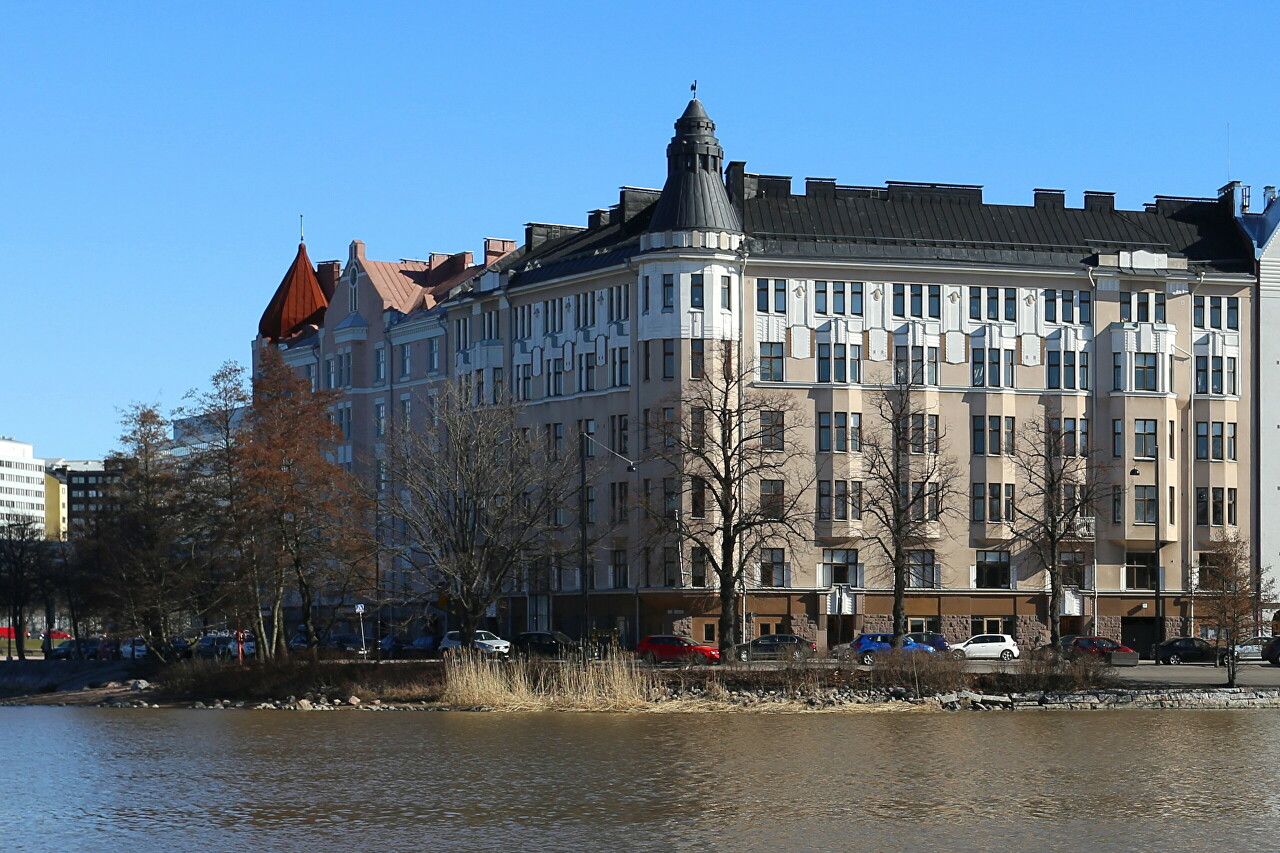
A narrow bridge that runs along the railway tracks of the Central Station separates Elaitarkhan Bay from Lake Teele (Töölönlahti). Beyond the railway tracks, you can see one of the wooden villas in Linnunlaulu Park, and even further away is the Olympic Stadium Tower.
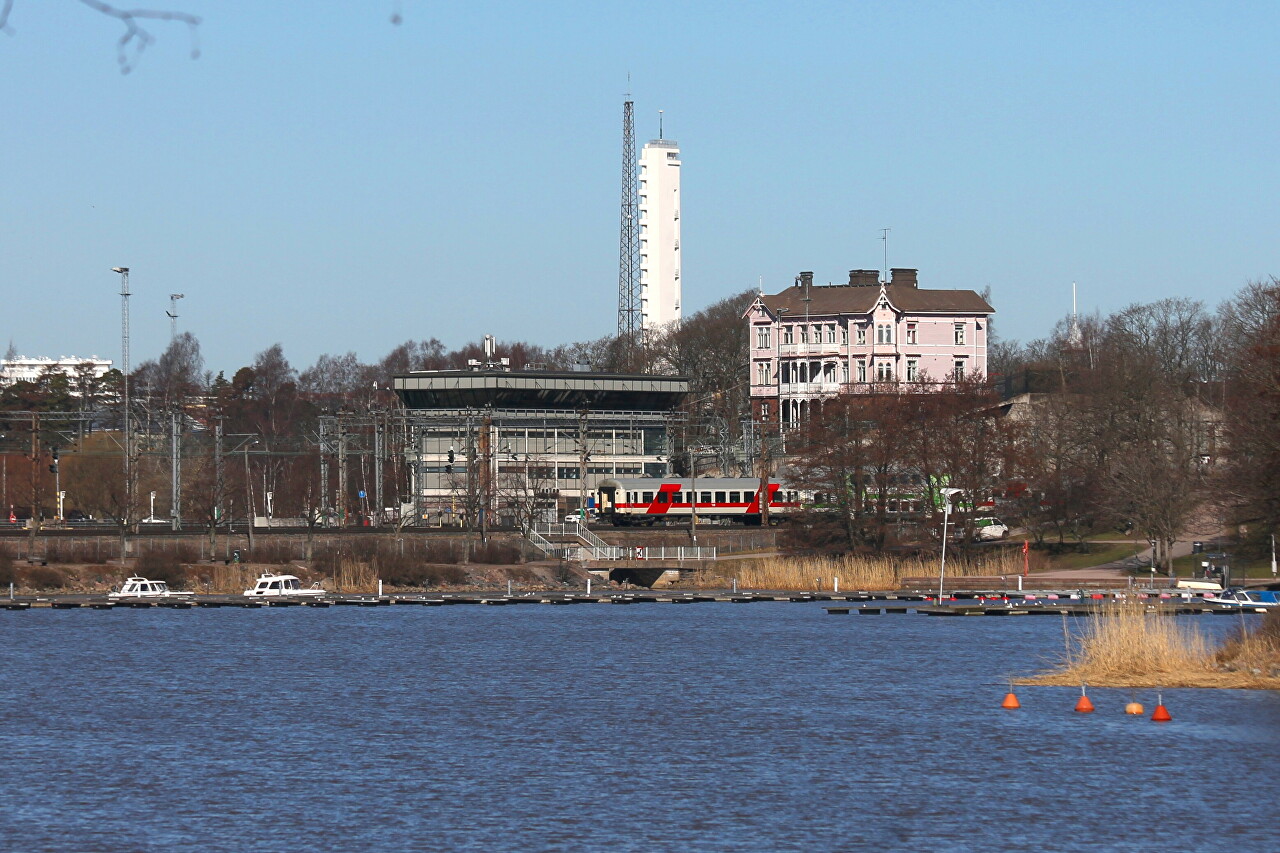
Almost all the shores of the bay are berths for small vessels.
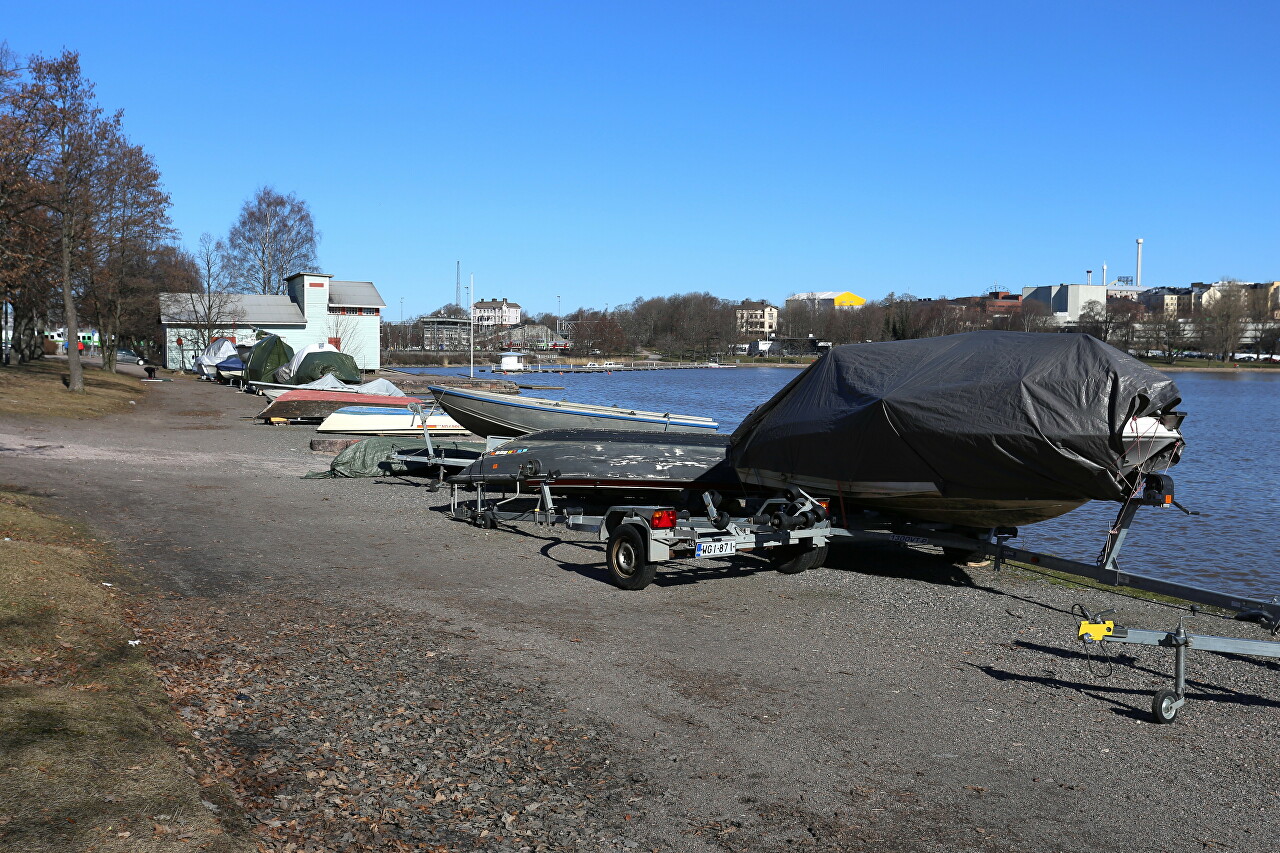
Some boats have already been stripped of their winter covers and their owners are preparing for navigation.
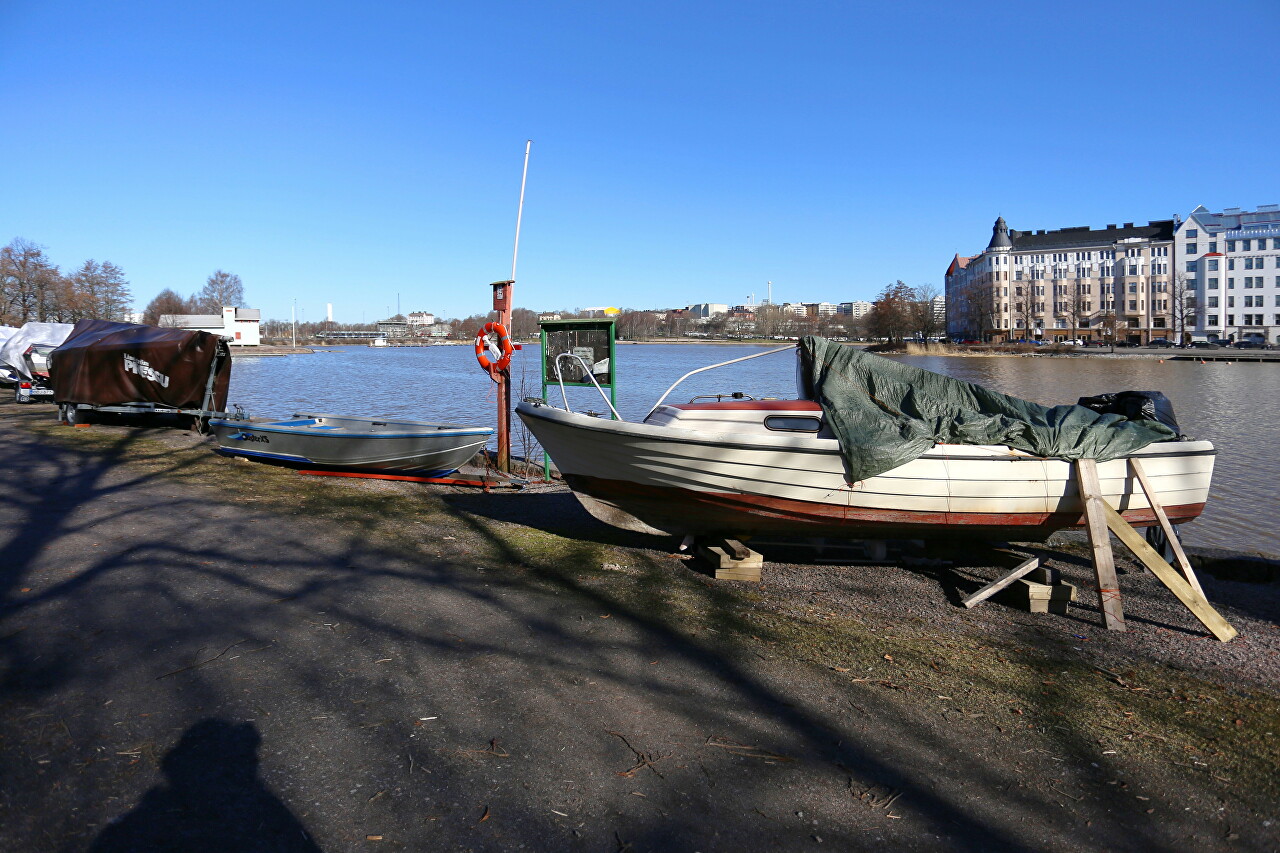
In the western part of the Kaisamienenranta embankment, you can see the "Rowers ' Hut" (Soutajien maja), where the Rowing Club is located. Kayaking is very popular in Finland.
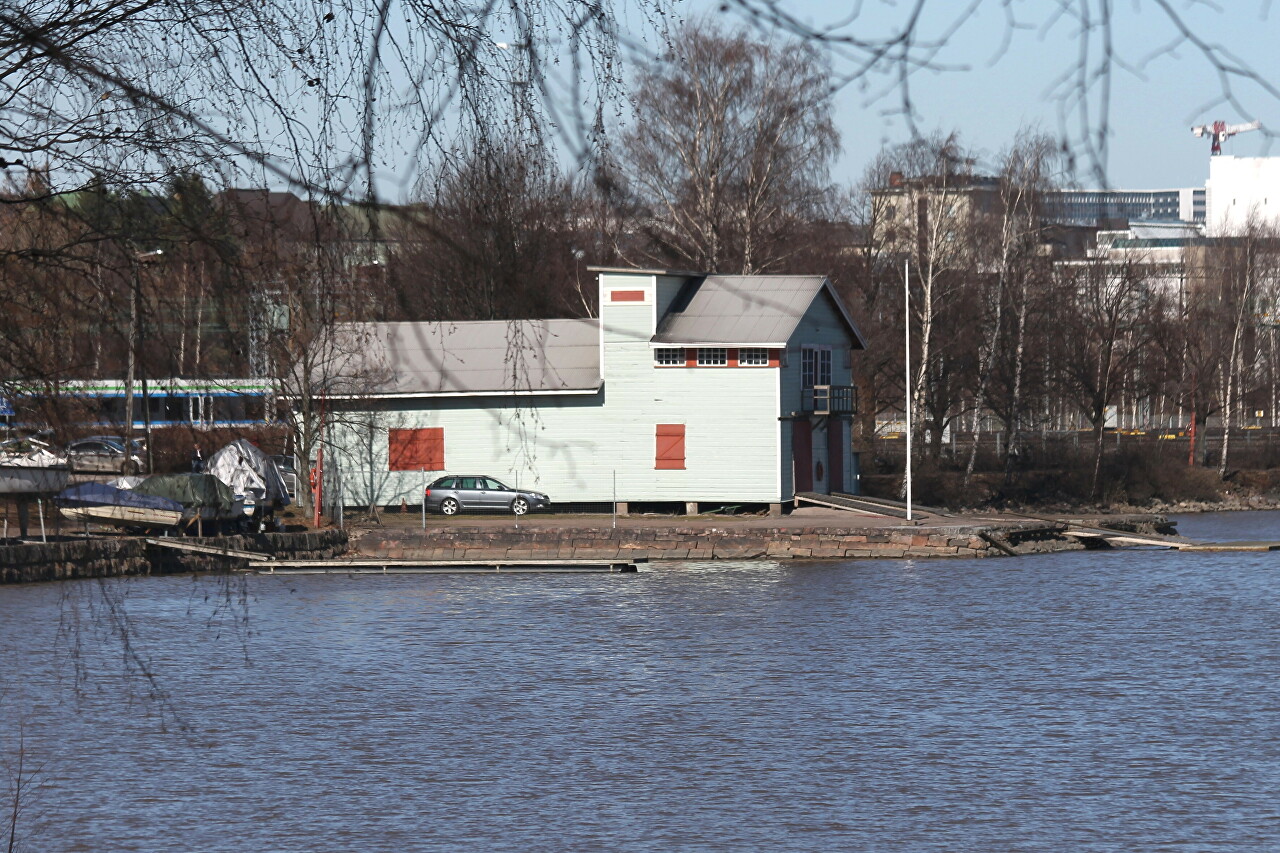
I still didn't understand the purpose of these inclined tubes in the wheelhouse of a motor boat. It seems that the motor is always hanging on the transom, even in the winter it is not removed. The owner, apparently, has no reason to fear that the engine will be stolen.
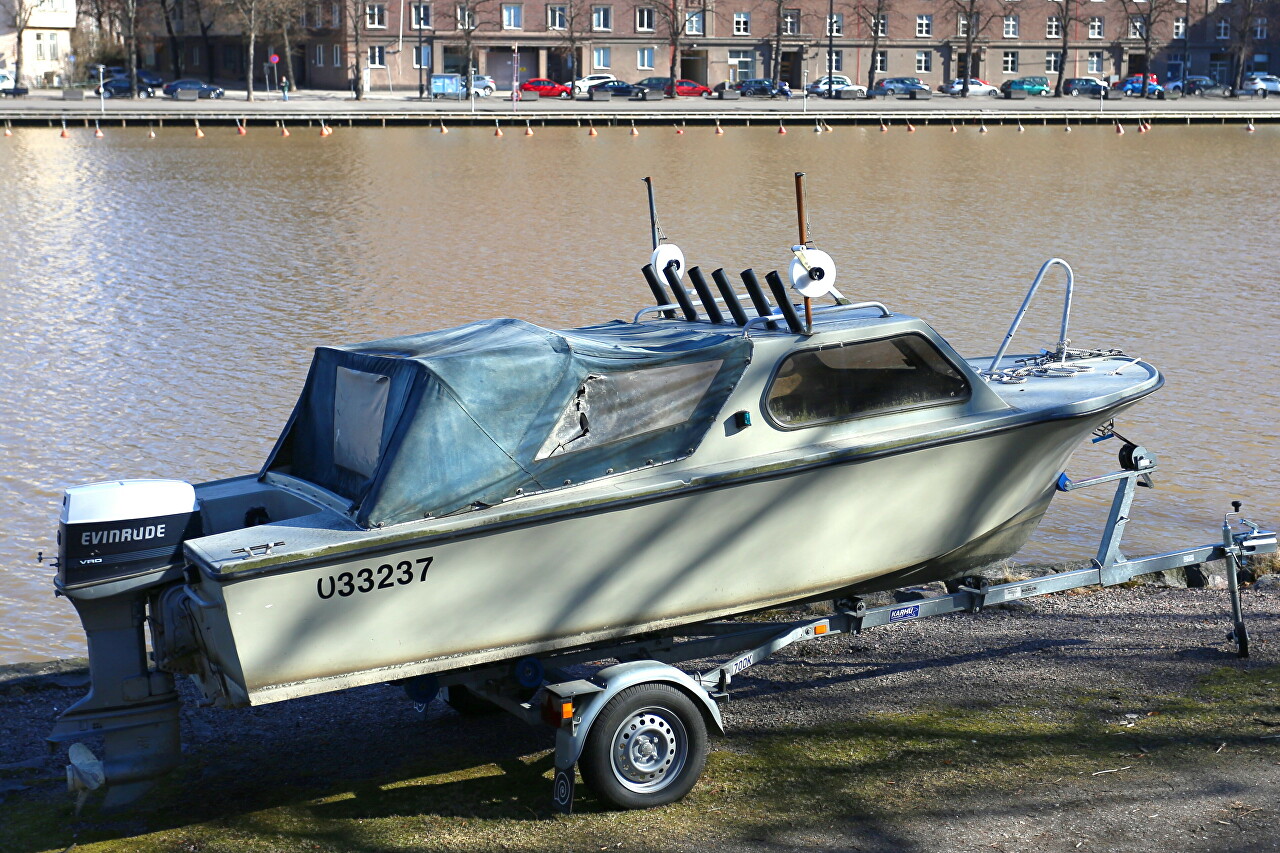
On the Kaisaniemenranta embankment, along the Botanical Garden, there are several wooden houses built in the early 19th century.
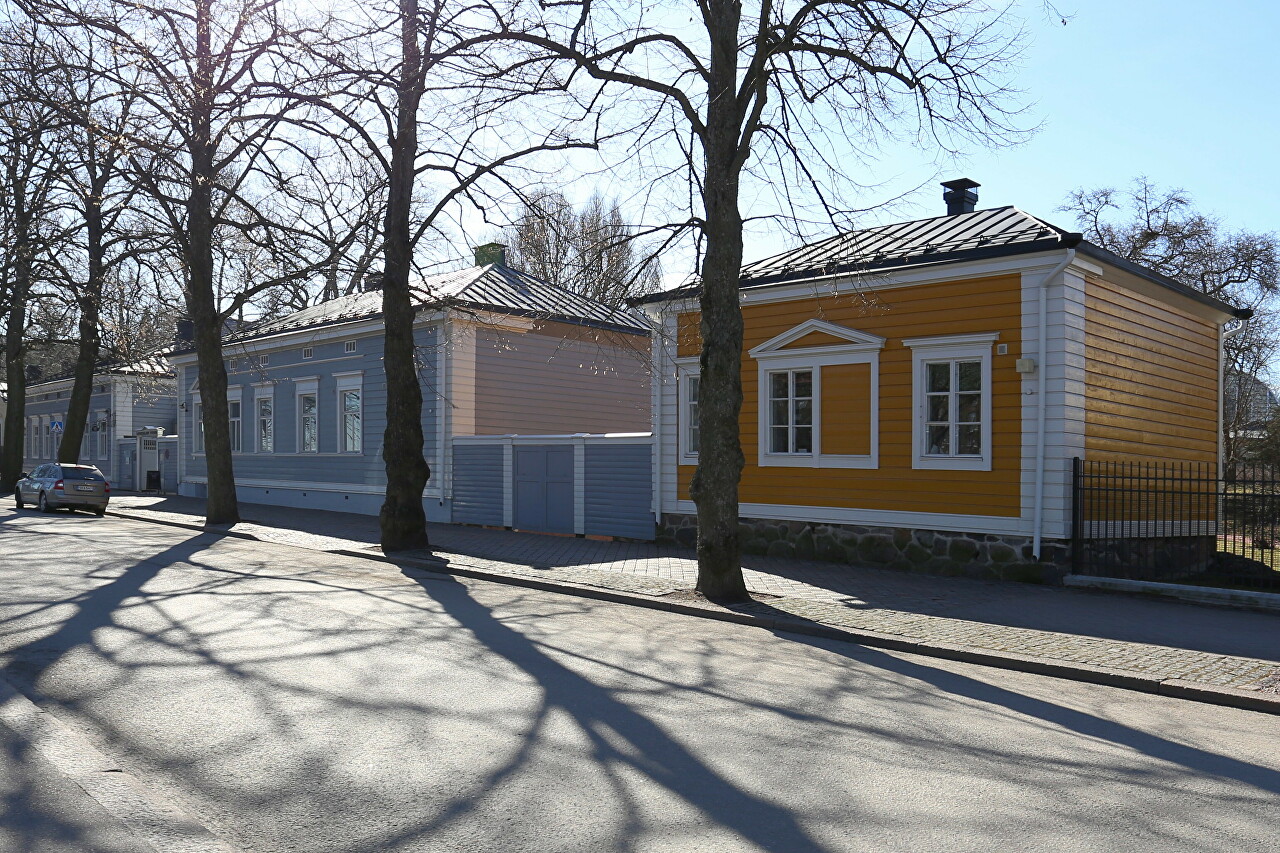
These buildings were preserved and moved here during the development of the Kruununhaka district at the beginning of the last century.
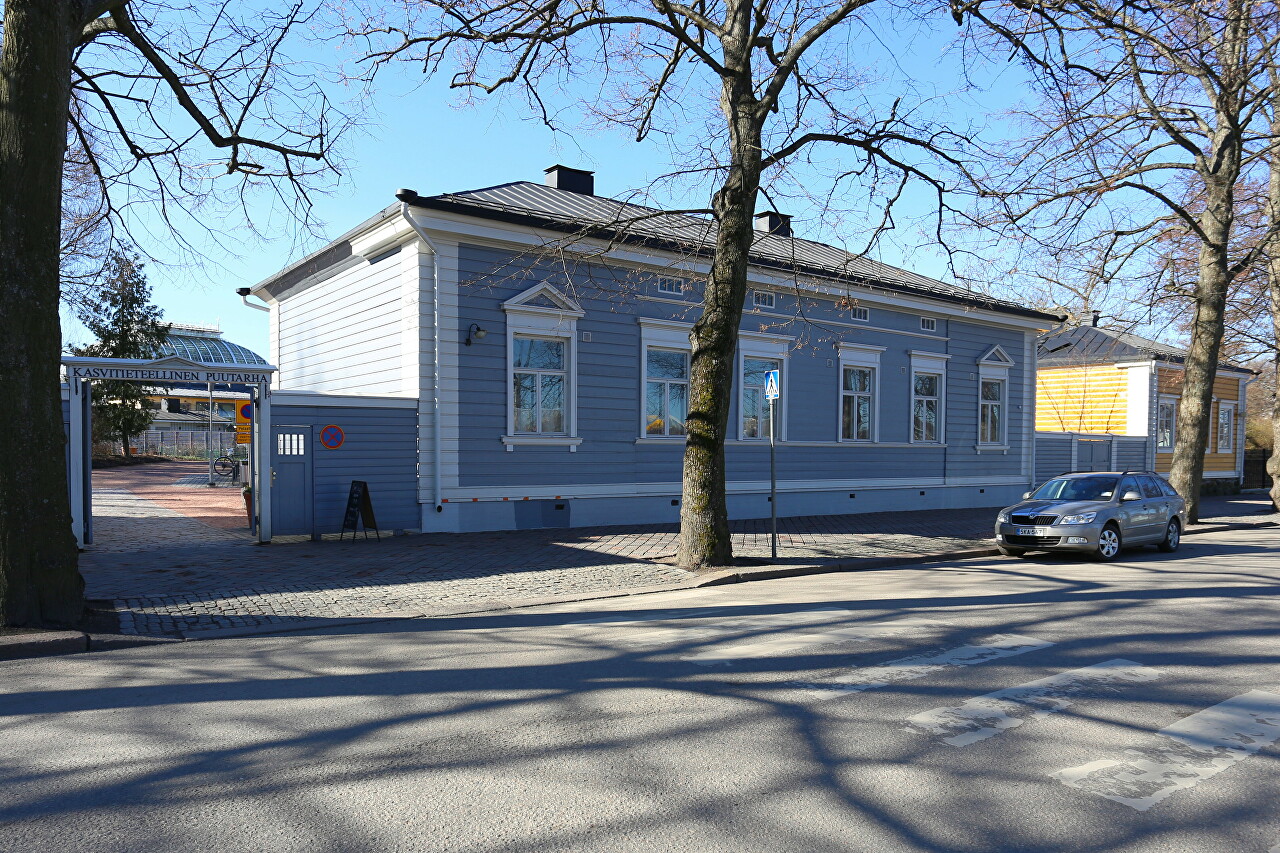
Between the houses, on the territory of the garden, you can see the bizarre remains of the trunk of a huge tree.
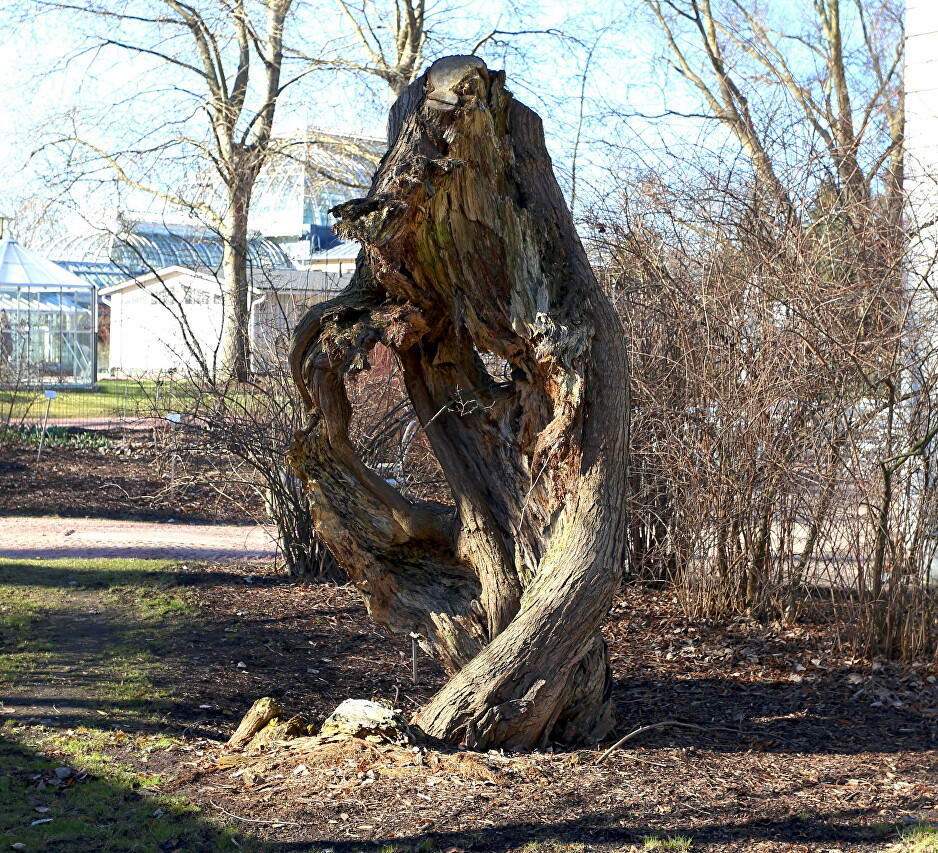
The sidewalks are marked with such" family " markings, there are no special bike paths, and such pictograms warn cyclists that people with children are walking here.
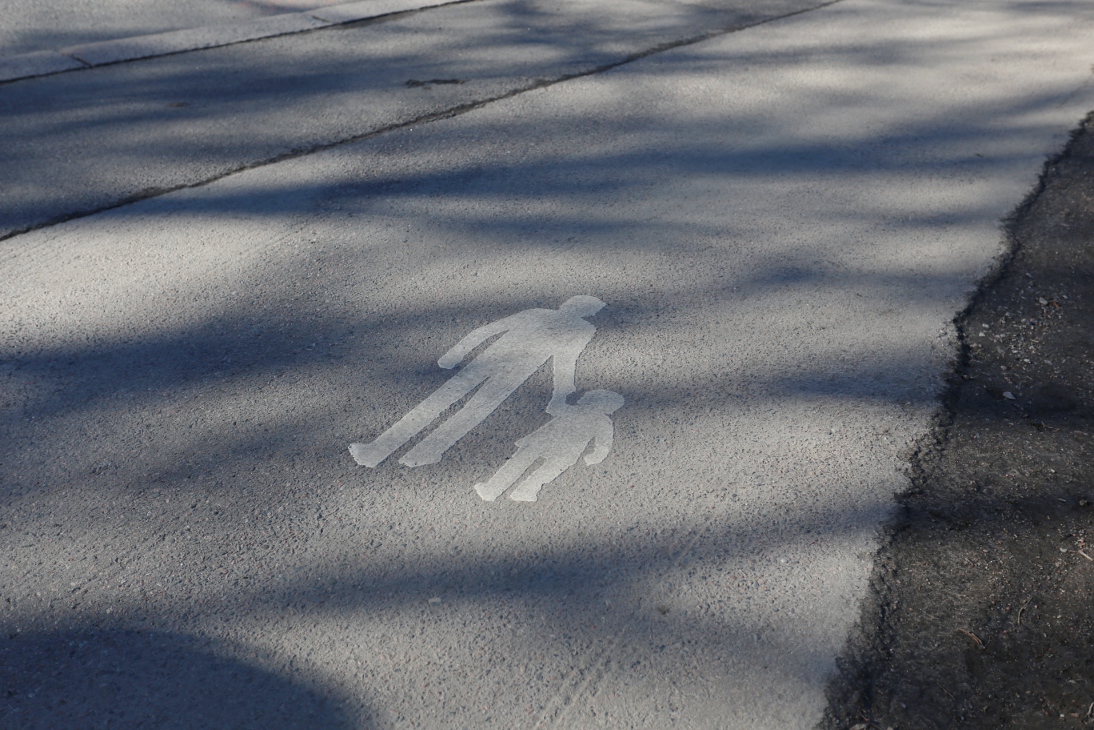
From the east, the strait borders the so-called "Long Bridge" (Pitkäsilta), which once divided the proletarian and bourgeois parts of Helsinki. I will tell you about it in the next article.
